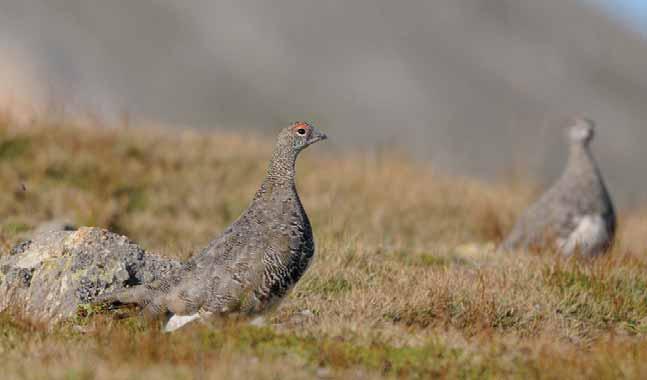
1 minute read
Birds in alpine habitats
Currently this is one of the habitats with the least information on bird populations.
Ahabitat is considered as alpine in Spain when it is located over 1,500 metres above sea level.The harsh conditions,extreme winds,low temperatures and snow cover that lasts for six to eight months a year in some locations,limit the existence of vegetation to large areas of grasslands and creeping shrubs,with large expanses of rock and scree and,on occasion,slopes which reach the vertical.
Advertisement


Jaime G.Puente ©

Livestock grazing is the most widespread land use and,with the exceptions of ski stations,the alpine zones are relatively undisturbed.
Only a few bird species are considered as alpine in Spain,but even so,their population sizes and trends are unknown.The only detailed information available regarding their range comes from the atlases of breeding birds.Of the eleven species associated with this environment - Water Pipit,Dunnock, Alpine Accentor,Bluethroat,Northern Wheatear,Rufous-tailed Rock Thrush,Wallcreeper,Yellow-billed Chough,Snowfinch, Dotterel and Ptarmigan - only the latter two qualify under the main IUCN threat criteria.The Dotterel is classified as ‘Endangered’and the Ptarmigan as ‘Vulnerable’.
The Ptarmigan population is estimated at between 442 and 738 breeding pairs,based on its density and available favourable habitat,but a general reduction in its range and a certain population decline has been observed, more accentuated in the peripheral populations of its breeding core group in the Pyrenees above 1,200 m.The scarce breeding pairs of the Dotterel in the Pyrenees breed more on the northern French side of the mountains and in fact,no evidence of their breeding has been registered in Spain in recent years.
Juan Bécares © Lagopus muta











